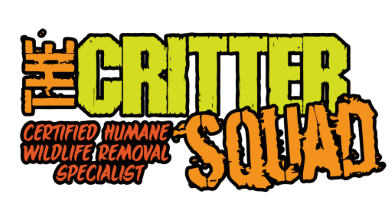Texas wildlife laws outline essential rights and responsibilities for individuals regarding the management and conservation of wildlife resources. These laws cover hunting and fishing regulations, endangered species protection, and the management of invasive species. Individuals must understand licensing requirements, bag limits, and ethical practices to contribute to conservation efforts. Additionally, there are mechanisms for reporting wildlife violations. Understanding these laws promotes a sustainable relationship between people and nature, ensuring the preservation of Texas’s diverse ecosystems. More insights await those interested in wildlife advocacy.
Key Article Highlights
- Familiarize yourself with hunting and fishing regulations, including licensing requirements, bag limits, and size restrictions to ensure compliance.
- Understand the legal protections for endangered species and the restrictions on activities that may harm them.
- Report wildlife violations, such as poaching or illegal hunting, to the Texas Parks and Wildlife Department to aid conservation efforts.
- Participate in community initiatives for habitat conservation and invasive species management to support local ecosystems.
- Stay informed about wildlife laws to foster a sustainable relationship between people and nature.
Overview of Texas Wildlife Laws
Texas wildlife laws are designed to protect the state’s diverse ecosystems while regulating the use and conservation of its wildlife resources. These laws emphasize habitat conservation to guarantee that natural environments remain intact and capable of supporting various species. Effective species management practices aim to maintain population stability, prevent overexploitation, and promote biodiversity. The Texas Parks and Wildlife Department plays a pivotal role in enforcing these laws, serving as a resource for education and compliance. By balancing ecological integrity with human activity, stakeholders can engage in responsible practices that benefit both wildlife and communities. Understanding and adhering to these regulations is vital for fostering a sustainable relationship between people and nature, ensuring that future generations can enjoy Texas’s rich wildlife heritage.
Hunting Regulations and Licensing
While engaging in hunting activities, individuals must adhere to specific regulations and licensing requirements established by the state to guarantee sustainable practices and wildlife conservation. Texas hunting regulations emphasize the importance of hunting ethics, ensuring that hunters respect wildlife populations and their habitats. License acquisition is mandatory, with various types available depending on the species pursued and the hunter’s age. Additionally, hunters must be aware of seasonal restrictions that dictate when specific game can be hunted, thereby preventing overharvesting during vulnerable periods. Compliance with these guidelines fosters responsible hunting and contributes to the preservation of Texas’s diverse ecosystems. Understanding and following these regulations is essential for all hunters committed to ethical stewardship of wildlife resources.
Fishing Laws and Guidelines
In Texas, fishing laws are governed by specific regulations that include licensing requirements, bag and size limits, and protections for certain species. Anglers must obtain the appropriate fishing license to legally fish in state waters, while adhering to established limits designed to promote sustainable fishing practices. Additionally, some species are designated as protected, and regulations regarding their capture must be strictly followed to guarantee conservation efforts are upheld.
Fishing License Requirements
Before casting a line in Texas waters, anglers must familiarize themselves with the state’s fishing license requirements, which are designed to regulate and conserve fish populations. Understanding these requirements is crucial for responsible fishing practices.
Texas offers various license types to accommodate different fishing methods and needs, including:
- Resident and Non-Resident Licenses: For individuals based on residency status.
- Senior and Disabled Licenses: Special provisions for those aged 65 and older or with disabilities.
- Specialty Licenses: For specific activities, such as fishing in state parks or for a specific duration.
Anglers should guarantee they possess the correct license to avoid penalties and contribute to the sustainability of aquatic ecosystems. Compliance with these regulations reflects a commitment to preserving Texas’s natural resources for future generations.
Bag and Size Limits
Bag and size limits are vital regulations established by Texas wildlife authorities to guarantee sustainable fishing practices and the protection of aquatic ecosystems. These limits are designed to manage fish populations effectively and ensure that anglers do not overharvest species. Bag limits specify the maximum number of fish an individual can catch within a given timeframe, while size limits dictate the minimum or maximum size of fish that can be legally harvested. Adhering to these regulations is essential for maintaining balance in aquatic environments, promoting responsible fishing habits, and preserving fish stocks for future generations. Anglers are encouraged to familiarize themselves with specific bag and size limits for various species, as these regulations can vary across different bodies of water.
Protected Species Regulations
Although fishing can be an enjoyable recreational activity, it is vital for anglers to understand and adhere to protected species regulations to safeguard vulnerable aquatic life. These regulations are critical for the preservation of endangered habitats and the promotion of species conservation in Texas waters. Anglers must be aware of several key rules:
- Identification of protected species: Familiarize oneself with fish and aquatic life that are classified as endangered or threatened.
- Catch and release practices: Implement proper techniques to minimize harm and guarantee the survival of released species.
- Reporting violations: Notify authorities about illegal fishing activities that threaten protected species.
Endangered Species Protection
As Texas continues to grapple with development pressures and habitat loss, the protection of endangered species has become a critical focus of state wildlife laws. These laws aim to safeguard species at risk of extinction due to various factors, including habitat destruction and climate change. The Texas Parks and Wildlife Department plays a pivotal role in identifying endangered species and implementing conservation strategies that promote habitat preservation. Legal protections restrict activities that could further endanger these species, ensuring their survival for future generations. Public awareness and engagement are essential in fostering a community-oriented approach to conservation. By understanding and adhering to these regulations, Texans can contribute to the preservation of their unique ecological heritage while supporting the delicate balance of local ecosystems.
Wildlife Rehabilitation and Permits
Wildlife rehabilitation in Texas is governed by an extensive set of regulations that secure the humane treatment and successful reintegration of injured or orphaned wildlife. Individuals interested in becoming wildlife rehabilitators must complete a permit application, demonstrating their knowledge of proper rehabilitation techniques.
Key components of the rehabilitation process include:
- Assessing injuries to determine appropriate care
- Providing proper nutrition tailored to the species
- Developing release plans to guarantee safe reintegration into the wild
Invasive Species Management
Invasive species management is essential for preserving Texas’s native ecosystems, as these non-native organisms can disrupt local biodiversity and outcompete indigenous species. Effective management techniques include early detection and rapid response, physical removal, habitat restoration, and public education. Monitoring invasive populations is vital, enabling wildlife officials and conservationists to implement timely interventions. Collaborating with local communities fosters awareness and encourages responsible practices to mitigate further introductions. The Texas Parks and Wildlife Department provides resources and guidance on identifying invasive species, emphasizing the importance of reporting sightings. By actively engaging in invasive species management, Texans can protect their natural heritage, ensuring that native wildlife and habitats flourish for future generations.
Landowner Rights and Responsibilities
While land ownership in Texas provides individuals with certain privileges, it also entails a set of responsibilities that must be understood and upheld. Landowners have specific obligations that contribute to wildlife conservation and the well-being of the environment. These responsibilities include:
- Ensuring sustainable land management practices to protect natural habitats
- Complying with local, state, and federal regulations regarding wildlife and natural resources
- Participating in conservation programs that promote biodiversity and ecosystem health
Reporting Wildlife Violations and Resources
How can individuals contribute to the protection of Texas’s natural resources? One essential way is through wildlife reporting. When individuals observe violations of wildlife laws, such as poaching or illegal hunting practices, they play an important role in upholding conservation efforts. Reporting these violations not only helps safeguard wildlife populations but also guarantees that violators face appropriate consequences for their actions. Texas Parks and Wildlife Department provides resources for reporting, including a hotline and online platforms, making it accessible for citizens to take action. By actively participating in wildlife reporting, individuals demonstrate their commitment to preserving Texas’s natural heritage and fostering a sustainable environment for future generations. Awareness and prompt reporting can greatly impact wildlife conservation efforts.
Frequently Asked Questions
What Should I Do if I Find Injured Wildlife?
Upon discovering an injured animal, one should assess the situation carefully, then contact local wildlife rehabilitation resources for guidance on proper injured animal care, ensuring the animal receives the necessary assistance while adhering to legal regulations.
Can I Keep Wild Animals as Pets?
Wildlife wonders should not wander into homes. Individuals interested in wildlife rehabilitation must understand regulations surrounding exotic animal ownership, as many species require specialized care and are unsuitable for domestic environments, posing potential risks to both animals and humans.
Are There Restrictions on Feeding Wildlife?
Restrictions on feeding wildlife often exist to guarantee ecological balance. Adhering to wildlife feeding regulations and implementing responsible feeding practices help prevent dependency on human sources, promoting healthier, more natural behaviors among wild animal populations.
How Do I Report Poaching Anonymously?
To report poaching anonymously, one can contact local wildlife authorities or utilize dedicated hotlines. This essential step supports wildlife conservation efforts, ensuring that offenders are held accountable while protecting the identity of concerned citizens.
What Are My Rights Regarding Wildlife on My Property?
Regarding wildlife on one’s property, individuals retain ownership rights within established property boundaries. They may manage wildlife populations, subject to local regulations, while ensuring ecological balance and respecting neighboring landowners’ rights to maintain harmony within the community.




























